-
EXECUTIVE SUMMARY
-
1.1.
-
Market Overview
-
Key Findings
-
Market Segmentation
-
1.4.
-
Competitive Landscape
-
Challenges and Opportunities
-
Future
-
Outlook
-
MARKET INTRODUCTION
-
Definition
-
Scope of the study
- Research Objective
- Assumption
- Limitations
-
RESEARCH METHODOLOGY
-
Overview
-
3.2.
-
Data Mining
-
Secondary Research
-
Primary Research
- Breakdown of Primary
-
3.4.1.
-
Primary Interviews and Information Gathering Process
-
Respondents
-
Forecasting Model
-
Market Size Estimation
- Top-Down Approach
-
3.6.1.
-
Bottom-Up Approach
-
Data Triangulation
-
Validation
-
MARKET DYNAMICS
-
Overview
-
Drivers
-
Restraints
-
Opportunities
-
MARKET
-
FACTOR ANALYSIS
-
Value chain Analysis
-
Porter''s Five Forces
- Bargaining Power of Suppliers
- Bargaining Power
- Threat of New Entrants
- Threat of Substitutes
- Intensity of Rivalry
-
Analysis
-
of Buyers
-
COVID-19 Impact Analysis
- Regional Impact
- Opportunity and
-
5.3.1.
-
Market Impact Analysis
-
Threat Analysis
-
AUTOMOTIVE EXHAUST EMISSION CONTROL DEVICE
-
MARKET, BY DEVICE TYPE (USD BILLION)
-
Catalytic Converters
-
6.2.
-
Diesel Particulate Filters
-
Exhaust Gas Recirculation Systems
-
6.4.
-
Selective Catalytic Reduction Systems
-
AUTOMOTIVE EXHAUST EMISSION CONTROL
-
DEVICE MARKET, BY FUEL TYPE (USD BILLION)
-
Gasoline
-
Diesel
-
Natural Gas
-
Alternative Fuels
-
AUTOMOTIVE EXHAUST
-
EMISSION CONTROL DEVICE MARKET, BY VEHICLE TYPE (USD BILLION)
-
Passenger
-
Cars
-
Light Commercial Vehicles
-
Heavy Commercial Vehicles
-
Two Wheelers
-
AUTOMOTIVE EXHAUST EMISSION CONTROL DEVICE MARKET,
-
BY EMISSION STANDARD (USD BILLION)
-
Euro 6
-
California Air Resources
-
Board
-
Tier 2 Bin 5
-
BS VI
-
AUTOMOTIVE EXHAUST EMISSION
-
CONTROL DEVICE MARKET, BY REGIONAL (USD BILLION)
-
North America
- Canada
-
10.1.1.
-
US
-
Europe
- Germany
- UK
- France
- Russia
- Italy
- Spain
- Rest of Europe
-
APAC
- China
- Japan
- South Korea
- Malaysia
- Indonesia
- Rest of APAC
-
10.3.2.
-
India
-
10.3.6.
-
Thailand
-
South America
- Brazil
- Mexico
- Argentina
-
10.4.4.
-
Rest of South America
-
MEA
- GCC Countries
- Rest of MEA
-
10.5.2.
-
South Africa
-
COMPETITIVE LANDSCAPE
-
Overview
-
Competitive Analysis
-
Market share Analysis
-
Major Growth Strategy in the Automotive Exhaust Emission Control Device
-
Market
-
Competitive Benchmarking
-
Leading Players in Terms
-
of Number of Developments in the Automotive Exhaust Emission Control Device Market
-
Key developments and growth strategies
- New Product Launch/Service
- Merger & Acquisitions
- Joint Ventures
-
Deployment
-
Major Players Financial Matrix
- Sales and Operating Income
- Major Players R&D Expenditure. 2023
-
COMPANY PROFILES
-
Ford Motor Company
- Financial Overview
- Products
- Key Developments
- SWOT Analysis
-
Offered
-
12.1.5.
-
Key Strategies
-
General Motors
- Financial Overview
- Key Developments
- SWOT Analysis
- Key Strategies
-
12.2.2.
-
Products Offered
-
LG Chem
- Financial Overview
- Products Offered
- Key Developments
- SWOT Analysis
- Key Strategies
-
Delphi Technologies
- Financial
- Products Offered
- Key Developments
- Key Strategies
-
Overview
-
12.4.4.
-
SWOT Analysis
-
Continental
- Products Offered
- Key Developments
- SWOT Analysis
- Key Strategies
-
12.5.1.
-
Financial Overview
-
Denso
- Products Offered
- Key Developments
- SWOT Analysis
- Key Strategies
-
12.6.1.
-
Financial Overview
-
Honeywell
- Financial Overview
- Products Offered
- Key Developments
- SWOT Analysis
- Key Strategies
-
Faurecia
- Financial Overview
- Products Offered
- Key Developments
- SWOT Analysis
- Key Strategies
-
Johnson Matthey
- Financial Overview
- Products Offered
- Key
- SWOT Analysis
- Key Strategies
- Financial Overview
- Products Offered
- Key Developments
- SWOT Analysis
- Key
-
Developments
-
12.10.
-
Magna International
-
Strategies
-
Eaton
- Financial Overview
- Products
- Key Developments
- SWOT Analysis
-
Offered
-
12.11.5.
-
Key Strategies
-
Aisin Seiki
- Financial Overview
- Key Developments
- SWOT Analysis
- Key Strategies
-
12.12.2.
-
Products Offered
-
Toyota Motor Corporation
- Financial
- Products Offered
- Key Developments
- Key Strategies
-
Overview
-
12.13.4.
-
SWOT Analysis
-
Tenneco
- Products Offered
- Key Developments
- SWOT Analysis
- Key Strategies
-
12.14.1.
-
Financial Overview
-
BASF
- Financial Overview
- Products Offered
- Key
- SWOT Analysis
- Key Strategies
-
Developments
-
13.
-
APPENDIX
-
References
-
Related Reports
-
LIST OF TABLES
-
LIST OF ASSUMPTIONS
-
NORTH AMERICA AUTOMOTIVE EXHAUST
-
EMISSION CONTROL DEVICE MARKET SIZE ESTIMATES & FORECAST, BY DEVICE TYPE, 2019-2032
-
(USD BILLIONS)
-
NORTH AMERICA AUTOMOTIVE EXHAUST EMISSION CONTROL
-
DEVICE MARKET SIZE ESTIMATES & FORECAST, BY FUEL TYPE, 2019-2032 (USD BILLIONS)
-
NORTH AMERICA AUTOMOTIVE EXHAUST EMISSION CONTROL DEVICE MARKET SIZE
-
ESTIMATES & FORECAST, BY VEHICLE TYPE, 2019-2032 (USD BILLIONS)
-
TABLE
-
NORTH AMERICA AUTOMOTIVE EXHAUST EMISSION CONTROL DEVICE MARKET SIZE ESTIMATES
-
& FORECAST, BY EMISSION STANDARD, 2019-2032 (USD BILLIONS)
-
NORTH
-
AMERICA AUTOMOTIVE EXHAUST EMISSION CONTROL DEVICE MARKET SIZE ESTIMATES & FORECAST,
-
BY REGIONAL, 2019-2032 (USD BILLIONS)
-
US AUTOMOTIVE EXHAUST EMISSION
-
CONTROL DEVICE MARKET SIZE ESTIMATES & FORECAST, BY DEVICE TYPE, 2019-2032 (USD
-
BILLIONS)
-
US AUTOMOTIVE EXHAUST EMISSION CONTROL DEVICE MARKET SIZE
-
ESTIMATES & FORECAST, BY FUEL TYPE, 2019-2032 (USD BILLIONS)
-
TABLE 9.
-
US AUTOMOTIVE EXHAUST EMISSION CONTROL DEVICE MARKET SIZE ESTIMATES & FORECAST,
-
BY VEHICLE TYPE, 2019-2032 (USD BILLIONS)
-
US AUTOMOTIVE EXHAUST
-
EMISSION CONTROL DEVICE MARKET SIZE ESTIMATES & FORECAST, BY EMISSION STANDARD,
-
US AUTOMOTIVE EXHAUST EMISSION CONTROL
-
DEVICE MARKET SIZE ESTIMATES & FORECAST, BY REGIONAL, 2019-2032 (USD BILLIONS)
-
CANADA AUTOMOTIVE EXHAUST EMISSION CONTROL DEVICE MARKET SIZE ESTIMATES
-
& FORECAST, BY DEVICE TYPE, 2019-2032 (USD BILLIONS)
-
CANADA
-
AUTOMOTIVE EXHAUST EMISSION CONTROL DEVICE MARKET SIZE ESTIMATES & FORECAST,
-
BY FUEL TYPE, 2019-2032 (USD BILLIONS)
-
CANADA AUTOMOTIVE EXHAUST
-
EMISSION CONTROL DEVICE MARKET SIZE ESTIMATES & FORECAST, BY VEHICLE TYPE, 2019-2032
-
(USD BILLIONS)
-
CANADA AUTOMOTIVE EXHAUST EMISSION CONTROL DEVICE
-
MARKET SIZE ESTIMATES & FORECAST, BY EMISSION STANDARD, 2019-2032 (USD BILLIONS)
-
CANADA AUTOMOTIVE EXHAUST EMISSION CONTROL DEVICE MARKET SIZE ESTIMATES
-
& FORECAST, BY REGIONAL, 2019-2032 (USD BILLIONS)
-
EUROPE AUTOMOTIVE
-
EXHAUST EMISSION CONTROL DEVICE MARKET SIZE ESTIMATES & FORECAST, BY DEVICE
-
TYPE, 2019-2032 (USD BILLIONS)
-
EUROPE AUTOMOTIVE EXHAUST EMISSION
-
CONTROL DEVICE MARKET SIZE ESTIMATES & FORECAST, BY FUEL TYPE, 2019-2032 (USD
-
BILLIONS)
-
EUROPE AUTOMOTIVE EXHAUST EMISSION CONTROL DEVICE MARKET
-
SIZE ESTIMATES & FORECAST, BY VEHICLE TYPE, 2019-2032 (USD BILLIONS)
-
TABLE
-
EUROPE AUTOMOTIVE EXHAUST EMISSION CONTROL DEVICE MARKET SIZE ESTIMATES &
-
FORECAST, BY EMISSION STANDARD, 2019-2032 (USD BILLIONS)
-
EUROPE
-
AUTOMOTIVE EXHAUST EMISSION CONTROL DEVICE MARKET SIZE ESTIMATES & FORECAST,
-
BY REGIONAL, 2019-2032 (USD BILLIONS)
-
GERMANY AUTOMOTIVE EXHAUST
-
EMISSION CONTROL DEVICE MARKET SIZE ESTIMATES & FORECAST, BY DEVICE TYPE, 2019-2032
-
(USD BILLIONS)
-
GERMANY AUTOMOTIVE EXHAUST EMISSION CONTROL DEVICE
-
MARKET SIZE ESTIMATES & FORECAST, BY FUEL TYPE, 2019-2032 (USD BILLIONS)
-
GERMANY AUTOMOTIVE EXHAUST EMISSION CONTROL DEVICE MARKET SIZE ESTIMATES
-
& FORECAST, BY VEHICLE TYPE, 2019-2032 (USD BILLIONS)
-
GERMANY
-
AUTOMOTIVE EXHAUST EMISSION CONTROL DEVICE MARKET SIZE ESTIMATES & FORECAST,
-
BY EMISSION STANDARD, 2019-2032 (USD BILLIONS)
-
GERMANY AUTOMOTIVE
-
EXHAUST EMISSION CONTROL DEVICE MARKET SIZE ESTIMATES & FORECAST, BY REGIONAL,
-
UK AUTOMOTIVE EXHAUST EMISSION CONTROL
-
DEVICE MARKET SIZE ESTIMATES & FORECAST, BY DEVICE TYPE, 2019-2032 (USD BILLIONS)
-
UK AUTOMOTIVE EXHAUST EMISSION CONTROL DEVICE MARKET SIZE ESTIMATES
-
& FORECAST, BY FUEL TYPE, 2019-2032 (USD BILLIONS)
-
UK AUTOMOTIVE
-
EXHAUST EMISSION CONTROL DEVICE MARKET SIZE ESTIMATES & FORECAST, BY VEHICLE
-
TYPE, 2019-2032 (USD BILLIONS)
-
UK AUTOMOTIVE EXHAUST EMISSION CONTROL
-
DEVICE MARKET SIZE ESTIMATES & FORECAST, BY EMISSION STANDARD, 2019-2032 (USD
-
BILLIONS)
-
UK AUTOMOTIVE EXHAUST EMISSION CONTROL DEVICE MARKET SIZE
-
ESTIMATES & FORECAST, BY REGIONAL, 2019-2032 (USD BILLIONS)
-
TABLE 32.
-
FRANCE AUTOMOTIVE EXHAUST EMISSION CONTROL DEVICE MARKET SIZE ESTIMATES & FORECAST,
-
BY DEVICE TYPE, 2019-2032 (USD BILLIONS)
-
FRANCE AUTOMOTIVE EXHAUST
-
EMISSION CONTROL DEVICE MARKET SIZE ESTIMATES & FORECAST, BY FUEL TYPE, 2019-2032
-
(USD BILLIONS)
-
FRANCE AUTOMOTIVE EXHAUST EMISSION CONTROL DEVICE
-
MARKET SIZE ESTIMATES & FORECAST, BY VEHICLE TYPE, 2019-2032 (USD BILLIONS)
-
FRANCE AUTOMOTIVE EXHAUST EMISSION CONTROL DEVICE MARKET SIZE ESTIMATES
-
& FORECAST, BY EMISSION STANDARD, 2019-2032 (USD BILLIONS)
-
FRANCE
-
AUTOMOTIVE EXHAUST EMISSION CONTROL DEVICE MARKET SIZE ESTIMATES & FORECAST,
-
BY REGIONAL, 2019-2032 (USD BILLIONS)
-
RUSSIA AUTOMOTIVE EXHAUST
-
EMISSION CONTROL DEVICE MARKET SIZE ESTIMATES & FORECAST, BY DEVICE TYPE, 2019-2032
-
(USD BILLIONS)
-
RUSSIA AUTOMOTIVE EXHAUST EMISSION CONTROL DEVICE
-
MARKET SIZE ESTIMATES & FORECAST, BY FUEL TYPE, 2019-2032 (USD BILLIONS)
-
RUSSIA AUTOMOTIVE EXHAUST EMISSION CONTROL DEVICE MARKET SIZE ESTIMATES
-
& FORECAST, BY VEHICLE TYPE, 2019-2032 (USD BILLIONS)
-
RUSSIA
-
AUTOMOTIVE EXHAUST EMISSION CONTROL DEVICE MARKET SIZE ESTIMATES & FORECAST,
-
BY EMISSION STANDARD, 2019-2032 (USD BILLIONS)
-
RUSSIA AUTOMOTIVE
-
EXHAUST EMISSION CONTROL DEVICE MARKET SIZE ESTIMATES & FORECAST, BY REGIONAL,
-
ITALY AUTOMOTIVE EXHAUST EMISSION CONTROL
-
DEVICE MARKET SIZE ESTIMATES & FORECAST, BY DEVICE TYPE, 2019-2032 (USD BILLIONS)
-
ITALY AUTOMOTIVE EXHAUST EMISSION CONTROL DEVICE MARKET SIZE ESTIMATES
-
& FORECAST, BY FUEL TYPE, 2019-2032 (USD BILLIONS)
-
ITALY AUTOMOTIVE
-
EXHAUST EMISSION CONTROL DEVICE MARKET SIZE ESTIMATES & FORECAST, BY VEHICLE
-
TYPE, 2019-2032 (USD BILLIONS)
-
ITALY AUTOMOTIVE EXHAUST EMISSION
-
CONTROL DEVICE MARKET SIZE ESTIMATES & FORECAST, BY EMISSION STANDARD, 2019-2032
-
(USD BILLIONS)
-
ITALY AUTOMOTIVE EXHAUST EMISSION CONTROL DEVICE
-
MARKET SIZE ESTIMATES & FORECAST, BY REGIONAL, 2019-2032 (USD BILLIONS)
-
SPAIN AUTOMOTIVE EXHAUST EMISSION CONTROL DEVICE MARKET SIZE ESTIMATES
-
& FORECAST, BY DEVICE TYPE, 2019-2032 (USD BILLIONS)
-
SPAIN AUTOMOTIVE
-
EXHAUST EMISSION CONTROL DEVICE MARKET SIZE ESTIMATES & FORECAST, BY FUEL TYPE,
-
SPAIN AUTOMOTIVE EXHAUST EMISSION CONTROL
-
DEVICE MARKET SIZE ESTIMATES & FORECAST, BY VEHICLE TYPE, 2019-2032 (USD BILLIONS)
-
SPAIN AUTOMOTIVE EXHAUST EMISSION CONTROL DEVICE MARKET SIZE ESTIMATES
-
& FORECAST, BY EMISSION STANDARD, 2019-2032 (USD BILLIONS)
-
SPAIN
-
AUTOMOTIVE EXHAUST EMISSION CONTROL DEVICE MARKET SIZE ESTIMATES & FORECAST,
-
BY REGIONAL, 2019-2032 (USD BILLIONS)
-
REST OF EUROPE AUTOMOTIVE
-
EXHAUST EMISSION CONTROL DEVICE MARKET SIZE ESTIMATES & FORECAST, BY DEVICE
-
TYPE, 2019-2032 (USD BILLIONS)
-
REST OF EUROPE AUTOMOTIVE EXHAUST
-
EMISSION CONTROL DEVICE MARKET SIZE ESTIMATES & FORECAST, BY FUEL TYPE, 2019-2032
-
(USD BILLIONS)
-
REST OF EUROPE AUTOMOTIVE EXHAUST EMISSION CONTROL
-
DEVICE MARKET SIZE ESTIMATES & FORECAST, BY VEHICLE TYPE, 2019-2032 (USD BILLIONS)
-
REST OF EUROPE AUTOMOTIVE EXHAUST EMISSION CONTROL DEVICE MARKET
-
SIZE ESTIMATES & FORECAST, BY EMISSION STANDARD, 2019-2032 (USD BILLIONS)
-
REST OF EUROPE AUTOMOTIVE EXHAUST EMISSION CONTROL DEVICE MARKET SIZE
-
ESTIMATES & FORECAST, BY REGIONAL, 2019-2032 (USD BILLIONS)
-
TABLE 57.
-
APAC AUTOMOTIVE EXHAUST EMISSION CONTROL DEVICE MARKET SIZE ESTIMATES & FORECAST,
-
BY DEVICE TYPE, 2019-2032 (USD BILLIONS)
-
APAC AUTOMOTIVE EXHAUST
-
EMISSION CONTROL DEVICE MARKET SIZE ESTIMATES & FORECAST, BY FUEL TYPE, 2019-2032
-
(USD BILLIONS)
-
APAC AUTOMOTIVE EXHAUST EMISSION CONTROL DEVICE MARKET
-
SIZE ESTIMATES & FORECAST, BY VEHICLE TYPE, 2019-2032 (USD BILLIONS)
-
TABLE
-
APAC AUTOMOTIVE EXHAUST EMISSION CONTROL DEVICE MARKET SIZE ESTIMATES &
-
FORECAST, BY EMISSION STANDARD, 2019-2032 (USD BILLIONS)
-
APAC AUTOMOTIVE
-
EXHAUST EMISSION CONTROL DEVICE MARKET SIZE ESTIMATES & FORECAST, BY REGIONAL,
-
CHINA AUTOMOTIVE EXHAUST EMISSION CONTROL
-
DEVICE MARKET SIZE ESTIMATES & FORECAST, BY DEVICE TYPE, 2019-2032 (USD BILLIONS)
-
CHINA AUTOMOTIVE EXHAUST EMISSION CONTROL DEVICE MARKET SIZE ESTIMATES
-
& FORECAST, BY FUEL TYPE, 2019-2032 (USD BILLIONS)
-
CHINA AUTOMOTIVE
-
EXHAUST EMISSION CONTROL DEVICE MARKET SIZE ESTIMATES & FORECAST, BY VEHICLE
-
TYPE, 2019-2032 (USD BILLIONS)
-
CHINA AUTOMOTIVE EXHAUST EMISSION
-
CONTROL DEVICE MARKET SIZE ESTIMATES & FORECAST, BY EMISSION STANDARD, 2019-2032
-
(USD BILLIONS)
-
CHINA AUTOMOTIVE EXHAUST EMISSION CONTROL DEVICE
-
MARKET SIZE ESTIMATES & FORECAST, BY REGIONAL, 2019-2032 (USD BILLIONS)
-
INDIA AUTOMOTIVE EXHAUST EMISSION CONTROL DEVICE MARKET SIZE ESTIMATES
-
& FORECAST, BY DEVICE TYPE, 2019-2032 (USD BILLIONS)
-
INDIA AUTOMOTIVE
-
EXHAUST EMISSION CONTROL DEVICE MARKET SIZE ESTIMATES & FORECAST, BY FUEL TYPE,
-
INDIA AUTOMOTIVE EXHAUST EMISSION CONTROL
-
DEVICE MARKET SIZE ESTIMATES & FORECAST, BY VEHICLE TYPE, 2019-2032 (USD BILLIONS)
-
INDIA AUTOMOTIVE EXHAUST EMISSION CONTROL DEVICE MARKET SIZE ESTIMATES
-
& FORECAST, BY EMISSION STANDARD, 2019-2032 (USD BILLIONS)
-
INDIA
-
AUTOMOTIVE EXHAUST EMISSION CONTROL DEVICE MARKET SIZE ESTIMATES & FORECAST,
-
BY REGIONAL, 2019-2032 (USD BILLIONS)
-
JAPAN AUTOMOTIVE EXHAUST EMISSION
-
CONTROL DEVICE MARKET SIZE ESTIMATES & FORECAST, BY DEVICE TYPE, 2019-2032 (USD
-
BILLIONS)
-
JAPAN AUTOMOTIVE EXHAUST EMISSION CONTROL DEVICE MARKET
-
SIZE ESTIMATES & FORECAST, BY FUEL TYPE, 2019-2032 (USD BILLIONS)
-
TABLE
-
JAPAN AUTOMOTIVE EXHAUST EMISSION CONTROL DEVICE MARKET SIZE ESTIMATES &
-
FORECAST, BY VEHICLE TYPE, 2019-2032 (USD BILLIONS)
-
JAPAN AUTOMOTIVE
-
EXHAUST EMISSION CONTROL DEVICE MARKET SIZE ESTIMATES & FORECAST, BY EMISSION
-
STANDARD, 2019-2032 (USD BILLIONS)
-
JAPAN AUTOMOTIVE EXHAUST EMISSION
-
CONTROL DEVICE MARKET SIZE ESTIMATES & FORECAST, BY REGIONAL, 2019-2032 (USD
-
BILLIONS)
-
SOUTH KOREA AUTOMOTIVE EXHAUST EMISSION CONTROL DEVICE
-
MARKET SIZE ESTIMATES & FORECAST, BY DEVICE TYPE, 2019-2032 (USD BILLIONS)
-
SOUTH KOREA AUTOMOTIVE EXHAUST EMISSION CONTROL DEVICE MARKET SIZE ESTIMATES
-
& FORECAST, BY FUEL TYPE, 2019-2032 (USD BILLIONS)
-
SOUTH KOREA
-
AUTOMOTIVE EXHAUST EMISSION CONTROL DEVICE MARKET SIZE ESTIMATES & FORECAST,
-
BY VEHICLE TYPE, 2019-2032 (USD BILLIONS)
-
SOUTH KOREA AUTOMOTIVE
-
EXHAUST EMISSION CONTROL DEVICE MARKET SIZE ESTIMATES & FORECAST, BY EMISSION
-
STANDARD, 2019-2032 (USD BILLIONS)
-
SOUTH KOREA AUTOMOTIVE EXHAUST
-
EMISSION CONTROL DEVICE MARKET SIZE ESTIMATES & FORECAST, BY REGIONAL, 2019-2032
-
(USD BILLIONS)
-
MALAYSIA AUTOMOTIVE EXHAUST EMISSION CONTROL DEVICE
-
MARKET SIZE ESTIMATES & FORECAST, BY DEVICE TYPE, 2019-2032 (USD BILLIONS)
-
MALAYSIA AUTOMOTIVE EXHAUST EMISSION CONTROL DEVICE MARKET SIZE ESTIMATES
-
& FORECAST, BY FUEL TYPE, 2019-2032 (USD BILLIONS)
-
MALAYSIA
-
AUTOMOTIVE EXHAUST EMISSION CONTROL DEVICE MARKET SIZE ESTIMATES & FORECAST,
-
BY VEHICLE TYPE, 2019-2032 (USD BILLIONS)
-
MALAYSIA AUTOMOTIVE EXHAUST
-
EMISSION CONTROL DEVICE MARKET SIZE ESTIMATES & FORECAST, BY EMISSION STANDARD,
-
MALAYSIA AUTOMOTIVE EXHAUST EMISSION CONTROL
-
DEVICE MARKET SIZE ESTIMATES & FORECAST, BY REGIONAL, 2019-2032 (USD BILLIONS)
-
THAILAND AUTOMOTIVE EXHAUST EMISSION CONTROL DEVICE MARKET SIZE
-
ESTIMATES & FORECAST, BY DEVICE TYPE, 2019-2032 (USD BILLIONS)
-
TABLE 88.
-
THAILAND AUTOMOTIVE EXHAUST EMISSION CONTROL DEVICE MARKET SIZE ESTIMATES &
-
FORECAST, BY FUEL TYPE, 2019-2032 (USD BILLIONS)
-
THAILAND AUTOMOTIVE
-
EXHAUST EMISSION CONTROL DEVICE MARKET SIZE ESTIMATES & FORECAST, BY VEHICLE
-
TYPE, 2019-2032 (USD BILLIONS)
-
THAILAND AUTOMOTIVE EXHAUST EMISSION
-
CONTROL DEVICE MARKET SIZE ESTIMATES & FORECAST, BY EMISSION STANDARD, 2019-2032
-
(USD BILLIONS)
-
THAILAND AUTOMOTIVE EXHAUST EMISSION CONTROL DEVICE
-
MARKET SIZE ESTIMATES & FORECAST, BY REGIONAL, 2019-2032 (USD BILLIONS)
-
INDONESIA AUTOMOTIVE EXHAUST EMISSION CONTROL DEVICE MARKET SIZE ESTIMATES
-
& FORECAST, BY DEVICE TYPE, 2019-2032 (USD BILLIONS)
-
INDONESIA
-
AUTOMOTIVE EXHAUST EMISSION CONTROL DEVICE MARKET SIZE ESTIMATES & FORECAST,
-
BY FUEL TYPE, 2019-2032 (USD BILLIONS)
-
INDONESIA AUTOMOTIVE EXHAUST
-
EMISSION CONTROL DEVICE MARKET SIZE ESTIMATES & FORECAST, BY VEHICLE TYPE, 2019-2032
-
(USD BILLIONS)
-
INDONESIA AUTOMOTIVE EXHAUST EMISSION CONTROL DEVICE
-
MARKET SIZE ESTIMATES & FORECAST, BY EMISSION STANDARD, 2019-2032 (USD BILLIONS)
-
INDONESIA AUTOMOTIVE EXHAUST EMISSION CONTROL DEVICE MARKET SIZE
-
ESTIMATES & FORECAST, BY REGIONAL, 2019-2032 (USD BILLIONS)
-
TABLE 97.
-
REST OF APAC AUTOMOTIVE EXHAUST EMISSION CONTROL DEVICE MARKET SIZE ESTIMATES &
-
FORECAST, BY DEVICE TYPE, 2019-2032 (USD BILLIONS)
-
REST OF APAC
-
AUTOMOTIVE EXHAUST EMISSION CONTROL DEVICE MARKET SIZE ESTIMATES & FORECAST,
-
BY FUEL TYPE, 2019-2032 (USD BILLIONS)
-
REST OF APAC AUTOMOTIVE EXHAUST
-
EMISSION CONTROL DEVICE MARKET SIZE ESTIMATES & FORECAST, BY VEHICLE TYPE, 2019-2032
-
(USD BILLIONS)
-
REST OF APAC AUTOMOTIVE EXHAUST EMISSION CONTROL
-
DEVICE MARKET SIZE ESTIMATES & FORECAST, BY EMISSION STANDARD, 2019-2032 (USD
-
BILLIONS)
-
REST OF APAC AUTOMOTIVE EXHAUST EMISSION CONTROL DEVICE
-
MARKET SIZE ESTIMATES & FORECAST, BY REGIONAL, 2019-2032 (USD BILLIONS)
-
SOUTH AMERICA AUTOMOTIVE EXHAUST EMISSION CONTROL DEVICE MARKET SIZE
-
ESTIMATES & FORECAST, BY DEVICE TYPE, 2019-2032 (USD BILLIONS)
-
TABLE 103.
-
SOUTH AMERICA AUTOMOTIVE EXHAUST EMISSION CONTROL DEVICE MARKET SIZE ESTIMATES &
-
FORECAST, BY FUEL TYPE, 2019-2032 (USD BILLIONS)
-
SOUTH AMERICA
-
AUTOMOTIVE EXHAUST EMISSION CONTROL DEVICE MARKET SIZE ESTIMATES & FORECAST,
-
BY VEHICLE TYPE, 2019-2032 (USD BILLIONS)
-
SOUTH AMERICA AUTOMOTIVE
-
EXHAUST EMISSION CONTROL DEVICE MARKET SIZE ESTIMATES & FORECAST, BY EMISSION
-
STANDARD, 2019-2032 (USD BILLIONS)
-
SOUTH AMERICA AUTOMOTIVE EXHAUST
-
EMISSION CONTROL DEVICE MARKET SIZE ESTIMATES & FORECAST, BY REGIONAL, 2019-2032
-
(USD BILLIONS)
-
BRAZIL AUTOMOTIVE EXHAUST EMISSION CONTROL DEVICE
-
MARKET SIZE ESTIMATES & FORECAST, BY DEVICE TYPE, 2019-2032 (USD BILLIONS)
-
BRAZIL AUTOMOTIVE EXHAUST EMISSION CONTROL DEVICE MARKET SIZE ESTIMATES
-
& FORECAST, BY FUEL TYPE, 2019-2032 (USD BILLIONS)
-
BRAZIL AUTOMOTIVE
-
EXHAUST EMISSION CONTROL DEVICE MARKET SIZE ESTIMATES & FORECAST, BY VEHICLE
-
TYPE, 2019-2032 (USD BILLIONS)
-
BRAZIL AUTOMOTIVE EXHAUST EMISSION
-
CONTROL DEVICE MARKET SIZE ESTIMATES & FORECAST, BY EMISSION STANDARD, 2019-2032
-
(USD BILLIONS)
-
BRAZIL AUTOMOTIVE EXHAUST EMISSION CONTROL DEVICE
-
MARKET SIZE ESTIMATES & FORECAST, BY REGIONAL, 2019-2032 (USD BILLIONS)
-
MEXICO AUTOMOTIVE EXHAUST EMISSION CONTROL DEVICE MARKET SIZE ESTIMATES
-
& FORECAST, BY DEVICE TYPE, 2019-2032 (USD BILLIONS)
-
MEXICO
-
AUTOMOTIVE EXHAUST EMISSION CONTROL DEVICE MARKET SIZE ESTIMATES & FORECAST,
-
BY FUEL TYPE, 2019-2032 (USD BILLIONS)
-
MEXICO AUTOMOTIVE EXHAUST
-
EMISSION CONTROL DEVICE MARKET SIZE ESTIMATES & FORECAST, BY VEHICLE TYPE, 2019-2032
-
(USD BILLIONS)
-
MEXICO AUTOMOTIVE EXHAUST EMISSION CONTROL DEVICE
-
MARKET SIZE ESTIMATES & FORECAST, BY EMISSION STANDARD, 2019-2032 (USD BILLIONS)
-
MEXICO AUTOMOTIVE EXHAUST EMISSION CONTROL DEVICE MARKET SIZE ESTIMATES
-
& FORECAST, BY REGIONAL, 2019-2032 (USD BILLIONS)
-
ARGENTINA
-
AUTOMOTIVE EXHAUST EMISSION CONTROL DEVICE MARKET SIZE ESTIMATES & FORECAST,
-
BY DEVICE TYPE, 2019-2032 (USD BILLIONS)
-
ARGENTINA AUTOMOTIVE EXHAUST
-
EMISSION CONTROL DEVICE MARKET SIZE ESTIMATES & FORECAST, BY FUEL TYPE, 2019-2032
-
(USD BILLIONS)
-
ARGENTINA AUTOMOTIVE EXHAUST EMISSION CONTROL DEVICE
-
MARKET SIZE ESTIMATES & FORECAST, BY VEHICLE TYPE, 2019-2032 (USD BILLIONS)
-
ARGENTINA AUTOMOTIVE EXHAUST EMISSION CONTROL DEVICE MARKET SIZE
-
ESTIMATES & FORECAST, BY EMISSION STANDARD, 2019-2032 (USD BILLIONS)
-
TABLE
-
ARGENTINA AUTOMOTIVE EXHAUST EMISSION CONTROL DEVICE MARKET SIZE ESTIMATES
-
& FORECAST, BY REGIONAL, 2019-2032 (USD BILLIONS)
-
REST OF SOUTH
-
AMERICA AUTOMOTIVE EXHAUST EMISSION CONTROL DEVICE MARKET SIZE ESTIMATES & FORECAST,
-
BY DEVICE TYPE, 2019-2032 (USD BILLIONS)
-
REST OF SOUTH AMERICA
-
AUTOMOTIVE EXHAUST EMISSION CONTROL DEVICE MARKET SIZE ESTIMATES & FORECAST,
-
BY FUEL TYPE, 2019-2032 (USD BILLIONS)
-
REST OF SOUTH AMERICA AUTOMOTIVE
-
EXHAUST EMISSION CONTROL DEVICE MARKET SIZE ESTIMATES & FORECAST, BY VEHICLE
-
TYPE, 2019-2032 (USD BILLIONS)
-
REST OF SOUTH AMERICA AUTOMOTIVE
-
EXHAUST EMISSION CONTROL DEVICE MARKET SIZE ESTIMATES & FORECAST, BY EMISSION
-
STANDARD, 2019-2032 (USD BILLIONS)
-
REST OF SOUTH AMERICA AUTOMOTIVE
-
EXHAUST EMISSION CONTROL DEVICE MARKET SIZE ESTIMATES & FORECAST, BY REGIONAL,
-
MEA AUTOMOTIVE EXHAUST EMISSION CONTROL
-
DEVICE MARKET SIZE ESTIMATES & FORECAST, BY DEVICE TYPE, 2019-2032 (USD BILLIONS)
-
MEA AUTOMOTIVE EXHAUST EMISSION CONTROL DEVICE MARKET SIZE ESTIMATES
-
& FORECAST, BY FUEL TYPE, 2019-2032 (USD BILLIONS)
-
MEA AUTOMOTIVE
-
EXHAUST EMISSION CONTROL DEVICE MARKET SIZE ESTIMATES & FORECAST, BY VEHICLE
-
TYPE, 2019-2032 (USD BILLIONS)
-
MEA AUTOMOTIVE EXHAUST EMISSION
-
CONTROL DEVICE MARKET SIZE ESTIMATES & FORECAST, BY EMISSION STANDARD, 2019-2032
-
(USD BILLIONS)
-
MEA AUTOMOTIVE EXHAUST EMISSION CONTROL DEVICE MARKET
-
SIZE ESTIMATES & FORECAST, BY REGIONAL, 2019-2032 (USD BILLIONS)
-
TABLE
-
GCC COUNTRIES AUTOMOTIVE EXHAUST EMISSION CONTROL DEVICE MARKET SIZE ESTIMATES
-
& FORECAST, BY DEVICE TYPE, 2019-2032 (USD BILLIONS)
-
GCC COUNTRIES
-
AUTOMOTIVE EXHAUST EMISSION CONTROL DEVICE MARKET SIZE ESTIMATES & FORECAST,
-
BY FUEL TYPE, 2019-2032 (USD BILLIONS)
-
GCC COUNTRIES AUTOMOTIVE
-
EXHAUST EMISSION CONTROL DEVICE MARKET SIZE ESTIMATES & FORECAST, BY VEHICLE
-
TYPE, 2019-2032 (USD BILLIONS)
-
GCC COUNTRIES AUTOMOTIVE EXHAUST
-
EMISSION CONTROL DEVICE MARKET SIZE ESTIMATES & FORECAST, BY EMISSION STANDARD,
-
GCC COUNTRIES AUTOMOTIVE EXHAUST EMISSION
-
CONTROL DEVICE MARKET SIZE ESTIMATES & FORECAST, BY REGIONAL, 2019-2032 (USD
-
BILLIONS)
-
SOUTH AFRICA AUTOMOTIVE EXHAUST EMISSION CONTROL DEVICE
-
MARKET SIZE ESTIMATES & FORECAST, BY DEVICE TYPE, 2019-2032 (USD BILLIONS)
-
SOUTH AFRICA AUTOMOTIVE EXHAUST EMISSION CONTROL DEVICE MARKET SIZE
-
ESTIMATES & FORECAST, BY FUEL TYPE, 2019-2032 (USD BILLIONS)
-
TABLE 139.
-
SOUTH AFRICA AUTOMOTIVE EXHAUST EMISSION CONTROL DEVICE MARKET SIZE ESTIMATES &
-
FORECAST, BY VEHICLE TYPE, 2019-2032 (USD BILLIONS)
-
SOUTH AFRICA
-
AUTOMOTIVE EXHAUST EMISSION CONTROL DEVICE MARKET SIZE ESTIMATES & FORECAST,
-
BY EMISSION STANDARD, 2019-2032 (USD BILLIONS)
-
SOUTH AFRICA AUTOMOTIVE
-
EXHAUST EMISSION CONTROL DEVICE MARKET SIZE ESTIMATES & FORECAST, BY REGIONAL,
-
REST OF MEA AUTOMOTIVE EXHAUST EMISSION
-
CONTROL DEVICE MARKET SIZE ESTIMATES & FORECAST, BY DEVICE TYPE, 2019-2032 (USD
-
BILLIONS)
-
REST OF MEA AUTOMOTIVE EXHAUST EMISSION CONTROL DEVICE
-
MARKET SIZE ESTIMATES & FORECAST, BY FUEL TYPE, 2019-2032 (USD BILLIONS)
-
REST OF MEA AUTOMOTIVE EXHAUST EMISSION CONTROL DEVICE MARKET SIZE
-
ESTIMATES & FORECAST, BY VEHICLE TYPE, 2019-2032 (USD BILLIONS)
-
TABLE
-
REST OF MEA AUTOMOTIVE EXHAUST EMISSION CONTROL DEVICE MARKET SIZE ESTIMATES
-
& FORECAST, BY EMISSION STANDARD, 2019-2032 (USD BILLIONS)
-
TABLE 146.
-
REST OF MEA AUTOMOTIVE EXHAUST EMISSION CONTROL DEVICE MARKET SIZE ESTIMATES &
-
FORECAST, BY REGIONAL, 2019-2032 (USD BILLIONS)
-
PRODUCT LAUNCH/PRODUCT
-
DEVELOPMENT/APPROVAL
-
ACQUISITION/PARTNERSHIP
-
LIST OF
-
FIGURES
-
MARKET SYNOPSIS
-
NORTH AMERICA AUTOMOTIVE
-
EXHAUST EMISSION CONTROL DEVICE MARKET ANALYSIS
-
US AUTOMOTIVE EXHAUST
-
EMISSION CONTROL DEVICE MARKET ANALYSIS BY DEVICE TYPE
-
US AUTOMOTIVE
-
EXHAUST EMISSION CONTROL DEVICE MARKET ANALYSIS BY FUEL TYPE
-
US
-
AUTOMOTIVE EXHAUST EMISSION CONTROL DEVICE MARKET ANALYSIS BY VEHICLE TYPE
-
FIGURE
-
US AUTOMOTIVE EXHAUST EMISSION CONTROL DEVICE MARKET ANALYSIS BY EMISSION STANDARD
-
US AUTOMOTIVE EXHAUST EMISSION CONTROL DEVICE MARKET ANALYSIS BY
-
REGIONAL
-
CANADA AUTOMOTIVE EXHAUST EMISSION CONTROL DEVICE MARKET
-
ANALYSIS BY DEVICE TYPE
-
CANADA AUTOMOTIVE EXHAUST EMISSION CONTROL
-
DEVICE MARKET ANALYSIS BY FUEL TYPE
-
CANADA AUTOMOTIVE EXHAUST EMISSION
-
CONTROL DEVICE MARKET ANALYSIS BY VEHICLE TYPE
-
CANADA AUTOMOTIVE
-
EXHAUST EMISSION CONTROL DEVICE MARKET ANALYSIS BY EMISSION STANDARD
-
FIGURE
-
CANADA AUTOMOTIVE EXHAUST EMISSION CONTROL DEVICE MARKET ANALYSIS BY REGIONAL
-
EUROPE AUTOMOTIVE EXHAUST EMISSION CONTROL DEVICE MARKET ANALYSIS
-
GERMANY AUTOMOTIVE EXHAUST EMISSION CONTROL DEVICE MARKET ANALYSIS
-
BY DEVICE TYPE
-
GERMANY AUTOMOTIVE EXHAUST EMISSION CONTROL DEVICE
-
MARKET ANALYSIS BY FUEL TYPE
-
GERMANY AUTOMOTIVE EXHAUST EMISSION
-
CONTROL DEVICE MARKET ANALYSIS BY VEHICLE TYPE
-
GERMANY AUTOMOTIVE
-
EXHAUST EMISSION CONTROL DEVICE MARKET ANALYSIS BY EMISSION STANDARD
-
FIGURE
-
GERMANY AUTOMOTIVE EXHAUST EMISSION CONTROL DEVICE MARKET ANALYSIS BY REGIONAL
-
UK AUTOMOTIVE EXHAUST EMISSION CONTROL DEVICE MARKET ANALYSIS BY
-
DEVICE TYPE
-
UK AUTOMOTIVE EXHAUST EMISSION CONTROL DEVICE MARKET
-
ANALYSIS BY FUEL TYPE
-
UK AUTOMOTIVE EXHAUST EMISSION CONTROL DEVICE
-
MARKET ANALYSIS BY VEHICLE TYPE
-
UK AUTOMOTIVE EXHAUST EMISSION
-
CONTROL DEVICE MARKET ANALYSIS BY EMISSION STANDARD
-
UK AUTOMOTIVE
-
EXHAUST EMISSION CONTROL DEVICE MARKET ANALYSIS BY REGIONAL
-
FRANCE
-
AUTOMOTIVE EXHAUST EMISSION CONTROL DEVICE MARKET ANALYSIS BY DEVICE TYPE
-
FIGURE
-
FRANCE AUTOMOTIVE EXHAUST EMISSION CONTROL DEVICE MARKET ANALYSIS BY FUEL TYPE
-
FRANCE AUTOMOTIVE EXHAUST EMISSION CONTROL DEVICE MARKET ANALYSIS
-
BY VEHICLE TYPE
-
FRANCE AUTOMOTIVE EXHAUST EMISSION CONTROL DEVICE
-
MARKET ANALYSIS BY EMISSION STANDARD
-
FRANCE AUTOMOTIVE EXHAUST
-
EMISSION CONTROL DEVICE MARKET ANALYSIS BY REGIONAL
-
RUSSIA AUTOMOTIVE
-
EXHAUST EMISSION CONTROL DEVICE MARKET ANALYSIS BY DEVICE TYPE
-
FIGURE 30.
-
RUSSIA AUTOMOTIVE EXHAUST EMISSION CONTROL DEVICE MARKET ANALYSIS BY FUEL TYPE
-
RUSSIA AUTOMOTIVE EXHAUST EMISSION CONTROL DEVICE MARKET ANALYSIS BY
-
VEHICLE TYPE
-
RUSSIA AUTOMOTIVE EXHAUST EMISSION CONTROL DEVICE
-
MARKET ANALYSIS BY EMISSION STANDARD
-
RUSSIA AUTOMOTIVE EXHAUST
-
EMISSION CONTROL DEVICE MARKET ANALYSIS BY REGIONAL
-
ITALY AUTOMOTIVE
-
EXHAUST EMISSION CONTROL DEVICE MARKET ANALYSIS BY DEVICE TYPE
-
FIGURE 35.
-
ITALY AUTOMOTIVE EXHAUST EMISSION CONTROL DEVICE MARKET ANALYSIS BY FUEL TYPE
-
ITALY AUTOMOTIVE EXHAUST EMISSION CONTROL DEVICE MARKET ANALYSIS BY
-
VEHICLE TYPE
-
ITALY AUTOMOTIVE EXHAUST EMISSION CONTROL DEVICE MARKET
-
ANALYSIS BY EMISSION STANDARD
-
ITALY AUTOMOTIVE EXHAUST EMISSION
-
CONTROL DEVICE MARKET ANALYSIS BY REGIONAL
-
SPAIN AUTOMOTIVE EXHAUST
-
EMISSION CONTROL DEVICE MARKET ANALYSIS BY DEVICE TYPE
-
SPAIN AUTOMOTIVE
-
EXHAUST EMISSION CONTROL DEVICE MARKET ANALYSIS BY FUEL TYPE
-
SPAIN
-
AUTOMOTIVE EXHAUST EMISSION CONTROL DEVICE MARKET ANALYSIS BY VEHICLE TYPE
-
FIGURE
-
SPAIN AUTOMOTIVE EXHAUST EMISSION CONTROL DEVICE MARKET ANALYSIS BY EMISSION
-
STANDARD
-
SPAIN AUTOMOTIVE EXHAUST EMISSION CONTROL DEVICE MARKET
-
ANALYSIS BY REGIONAL
-
REST OF EUROPE AUTOMOTIVE EXHAUST EMISSION
-
CONTROL DEVICE MARKET ANALYSIS BY DEVICE TYPE
-
REST OF EUROPE AUTOMOTIVE
-
EXHAUST EMISSION CONTROL DEVICE MARKET ANALYSIS BY FUEL TYPE
-
REST
-
OF EUROPE AUTOMOTIVE EXHAUST EMISSION CONTROL DEVICE MARKET ANALYSIS BY VEHICLE
-
TYPE
-
REST OF EUROPE AUTOMOTIVE EXHAUST EMISSION CONTROL DEVICE
-
MARKET ANALYSIS BY EMISSION STANDARD
-
REST OF EUROPE AUTOMOTIVE
-
EXHAUST EMISSION CONTROL DEVICE MARKET ANALYSIS BY REGIONAL
-
APAC
-
AUTOMOTIVE EXHAUST EMISSION CONTROL DEVICE MARKET ANALYSIS
-
CHINA
-
AUTOMOTIVE EXHAUST EMISSION CONTROL DEVICE MARKET ANALYSIS BY DEVICE TYPE
-
FIGURE
-
CHINA AUTOMOTIVE EXHAUST EMISSION CONTROL DEVICE MARKET ANALYSIS BY FUEL TYPE
-
CHINA AUTOMOTIVE EXHAUST EMISSION CONTROL DEVICE MARKET ANALYSIS
-
BY VEHICLE TYPE
-
CHINA AUTOMOTIVE EXHAUST EMISSION CONTROL DEVICE
-
MARKET ANALYSIS BY EMISSION STANDARD
-
CHINA AUTOMOTIVE EXHAUST EMISSION
-
CONTROL DEVICE MARKET ANALYSIS BY REGIONAL
-
INDIA AUTOMOTIVE EXHAUST
-
EMISSION CONTROL DEVICE MARKET ANALYSIS BY DEVICE TYPE
-
INDIA AUTOMOTIVE
-
EXHAUST EMISSION CONTROL DEVICE MARKET ANALYSIS BY FUEL TYPE
-
INDIA
-
AUTOMOTIVE EXHAUST EMISSION CONTROL DEVICE MARKET ANALYSIS BY VEHICLE TYPE
-
FIGURE
-
INDIA AUTOMOTIVE EXHAUST EMISSION CONTROL DEVICE MARKET ANALYSIS BY EMISSION
-
STANDARD
-
INDIA AUTOMOTIVE EXHAUST EMISSION CONTROL DEVICE MARKET
-
ANALYSIS BY REGIONAL
-
JAPAN AUTOMOTIVE EXHAUST EMISSION CONTROL
-
DEVICE MARKET ANALYSIS BY DEVICE TYPE
-
JAPAN AUTOMOTIVE EXHAUST
-
EMISSION CONTROL DEVICE MARKET ANALYSIS BY FUEL TYPE
-
JAPAN AUTOMOTIVE
-
EXHAUST EMISSION CONTROL DEVICE MARKET ANALYSIS BY VEHICLE TYPE
-
FIGURE 63.
-
JAPAN AUTOMOTIVE EXHAUST EMISSION CONTROL DEVICE MARKET ANALYSIS BY EMISSION STANDARD
-
JAPAN AUTOMOTIVE EXHAUST EMISSION CONTROL DEVICE MARKET ANALYSIS
-
BY REGIONAL
-
SOUTH KOREA AUTOMOTIVE EXHAUST EMISSION CONTROL DEVICE
-
MARKET ANALYSIS BY DEVICE TYPE
-
SOUTH KOREA AUTOMOTIVE EXHAUST EMISSION
-
CONTROL DEVICE MARKET ANALYSIS BY FUEL TYPE
-
SOUTH KOREA AUTOMOTIVE
-
EXHAUST EMISSION CONTROL DEVICE MARKET ANALYSIS BY VEHICLE TYPE
-
FIGURE 68.
-
SOUTH KOREA AUTOMOTIVE EXHAUST EMISSION CONTROL DEVICE MARKET ANALYSIS BY EMISSION
-
STANDARD
-
SOUTH KOREA AUTOMOTIVE EXHAUST EMISSION CONTROL DEVICE
-
MARKET ANALYSIS BY REGIONAL
-
MALAYSIA AUTOMOTIVE EXHAUST EMISSION
-
CONTROL DEVICE MARKET ANALYSIS BY DEVICE TYPE
-
MALAYSIA AUTOMOTIVE
-
EXHAUST EMISSION CONTROL DEVICE MARKET ANALYSIS BY FUEL TYPE
-
MALAYSIA
-
AUTOMOTIVE EXHAUST EMISSION CONTROL DEVICE MARKET ANALYSIS BY VEHICLE TYPE
-
FIGURE
-
MALAYSIA AUTOMOTIVE EXHAUST EMISSION CONTROL DEVICE MARKET ANALYSIS BY EMISSION
-
STANDARD
-
MALAYSIA AUTOMOTIVE EXHAUST EMISSION CONTROL DEVICE MARKET
-
ANALYSIS BY REGIONAL
-
THAILAND AUTOMOTIVE EXHAUST EMISSION CONTROL
-
DEVICE MARKET ANALYSIS BY DEVICE TYPE
-
THAILAND AUTOMOTIVE EXHAUST
-
EMISSION CONTROL DEVICE MARKET ANALYSIS BY FUEL TYPE
-
THAILAND AUTOMOTIVE
-
EXHAUST EMISSION CONTROL DEVICE MARKET ANALYSIS BY VEHICLE TYPE
-
FIGURE 78.
-
THAILAND AUTOMOTIVE EXHAUST EMISSION CONTROL DEVICE MARKET ANALYSIS BY EMISSION
-
STANDARD
-
THAILAND AUTOMOTIVE EXHAUST EMISSION CONTROL DEVICE MARKET
-
ANALYSIS BY REGIONAL
-
INDONESIA AUTOMOTIVE EXHAUST EMISSION CONTROL
-
DEVICE MARKET ANALYSIS BY DEVICE TYPE
-
INDONESIA AUTOMOTIVE EXHAUST
-
EMISSION CONTROL DEVICE MARKET ANALYSIS BY FUEL TYPE
-
INDONESIA
-
AUTOMOTIVE EXHAUST EMISSION CONTROL DEVICE MARKET ANALYSIS BY VEHICLE TYPE
-
FIGURE
-
INDONESIA AUTOMOTIVE EXHAUST EMISSION CONTROL DEVICE MARKET ANALYSIS BY EMISSION
-
STANDARD
-
INDONESIA AUTOMOTIVE EXHAUST EMISSION CONTROL DEVICE MARKET
-
ANALYSIS BY REGIONAL
-
REST OF APAC AUTOMOTIVE EXHAUST EMISSION CONTROL
-
DEVICE MARKET ANALYSIS BY DEVICE TYPE
-
REST OF APAC AUTOMOTIVE EXHAUST
-
EMISSION CONTROL DEVICE MARKET ANALYSIS BY FUEL TYPE
-
REST OF APAC
-
AUTOMOTIVE EXHAUST EMISSION CONTROL DEVICE MARKET ANALYSIS BY VEHICLE TYPE
-
FIGURE
-
REST OF APAC AUTOMOTIVE EXHAUST EMISSION CONTROL DEVICE MARKET ANALYSIS BY EMISSION
-
STANDARD
-
REST OF APAC AUTOMOTIVE EXHAUST EMISSION CONTROL DEVICE
-
MARKET ANALYSIS BY REGIONAL
-
SOUTH AMERICA AUTOMOTIVE EXHAUST EMISSION
-
CONTROL DEVICE MARKET ANALYSIS
-
BRAZIL AUTOMOTIVE EXHAUST EMISSION
-
CONTROL DEVICE MARKET ANALYSIS BY DEVICE TYPE
-
BRAZIL AUTOMOTIVE
-
EXHAUST EMISSION CONTROL DEVICE MARKET ANALYSIS BY FUEL TYPE
-
BRAZIL
-
AUTOMOTIVE EXHAUST EMISSION CONTROL DEVICE MARKET ANALYSIS BY VEHICLE TYPE
-
FIGURE
-
BRAZIL AUTOMOTIVE EXHAUST EMISSION CONTROL DEVICE MARKET ANALYSIS BY EMISSION
-
STANDARD
-
BRAZIL AUTOMOTIVE EXHAUST EMISSION CONTROL DEVICE MARKET
-
ANALYSIS BY REGIONAL
-
MEXICO AUTOMOTIVE EXHAUST EMISSION CONTROL
-
DEVICE MARKET ANALYSIS BY DEVICE TYPE
-
MEXICO AUTOMOTIVE EXHAUST
-
EMISSION CONTROL DEVICE MARKET ANALYSIS BY FUEL TYPE
-
MEXICO AUTOMOTIVE
-
EXHAUST EMISSION CONTROL DEVICE MARKET ANALYSIS BY VEHICLE TYPE
-
FIGURE 99.
-
MEXICO AUTOMOTIVE EXHAUST EMISSION CONTROL DEVICE MARKET ANALYSIS BY EMISSION STANDARD
-
MEXICO AUTOMOTIVE EXHAUST EMISSION CONTROL DEVICE MARKET ANALYSIS
-
BY REGIONAL
-
ARGENTINA AUTOMOTIVE EXHAUST EMISSION CONTROL DEVICE
-
MARKET ANALYSIS BY DEVICE TYPE
-
ARGENTINA AUTOMOTIVE EXHAUST EMISSION
-
CONTROL DEVICE MARKET ANALYSIS BY FUEL TYPE
-
ARGENTINA AUTOMOTIVE
-
EXHAUST EMISSION CONTROL DEVICE MARKET ANALYSIS BY VEHICLE TYPE
-
FIGURE 104.
-
ARGENTINA AUTOMOTIVE EXHAUST EMISSION CONTROL DEVICE MARKET ANALYSIS BY EMISSION
-
STANDARD
-
ARGENTINA AUTOMOTIVE EXHAUST EMISSION CONTROL DEVICE
-
MARKET ANALYSIS BY REGIONAL
-
REST OF SOUTH AMERICA AUTOMOTIVE EXHAUST
-
EMISSION CONTROL DEVICE MARKET ANALYSIS BY DEVICE TYPE
-
REST OF
-
SOUTH AMERICA AUTOMOTIVE EXHAUST EMISSION CONTROL DEVICE MARKET ANALYSIS BY FUEL
-
TYPE
-
REST OF SOUTH AMERICA AUTOMOTIVE EXHAUST EMISSION CONTROL
-
DEVICE MARKET ANALYSIS BY VEHICLE TYPE
-
REST OF SOUTH AMERICA AUTOMOTIVE
-
EXHAUST EMISSION CONTROL DEVICE MARKET ANALYSIS BY EMISSION STANDARD
-
FIGURE
-
REST OF SOUTH AMERICA AUTOMOTIVE EXHAUST EMISSION CONTROL DEVICE MARKET ANALYSIS
-
BY REGIONAL
-
MEA AUTOMOTIVE EXHAUST EMISSION CONTROL DEVICE MARKET
-
ANALYSIS
-
GCC COUNTRIES AUTOMOTIVE EXHAUST EMISSION CONTROL DEVICE
-
MARKET ANALYSIS BY DEVICE TYPE
-
GCC COUNTRIES AUTOMOTIVE EXHAUST
-
EMISSION CONTROL DEVICE MARKET ANALYSIS BY FUEL TYPE
-
GCC COUNTRIES
-
AUTOMOTIVE EXHAUST EMISSION CONTROL DEVICE MARKET ANALYSIS BY VEHICLE TYPE
-
FIGURE
-
GCC COUNTRIES AUTOMOTIVE EXHAUST EMISSION CONTROL DEVICE MARKET ANALYSIS BY
-
EMISSION STANDARD
-
GCC COUNTRIES AUTOMOTIVE EXHAUST EMISSION CONTROL
-
DEVICE MARKET ANALYSIS BY REGIONAL
-
SOUTH AFRICA AUTOMOTIVE EXHAUST
-
EMISSION CONTROL DEVICE MARKET ANALYSIS BY DEVICE TYPE
-
SOUTH AFRICA
-
AUTOMOTIVE EXHAUST EMISSION CONTROL DEVICE MARKET ANALYSIS BY FUEL TYPE
-
FIGURE
-
SOUTH AFRICA AUTOMOTIVE EXHAUST EMISSION CONTROL DEVICE MARKET ANALYSIS BY
-
VEHICLE TYPE
-
SOUTH AFRICA AUTOMOTIVE EXHAUST EMISSION CONTROL
-
DEVICE MARKET ANALYSIS BY EMISSION STANDARD
-
SOUTH AFRICA AUTOMOTIVE
-
EXHAUST EMISSION CONTROL DEVICE MARKET ANALYSIS BY REGIONAL
-
REST
-
OF MEA AUTOMOTIVE EXHAUST EMISSION CONTROL DEVICE MARKET ANALYSIS BY DEVICE TYPE
-
REST OF MEA AUTOMOTIVE EXHAUST EMISSION CONTROL DEVICE MARKET
-
ANALYSIS BY FUEL TYPE
-
REST OF MEA AUTOMOTIVE EXHAUST EMISSION
-
CONTROL DEVICE MARKET ANALYSIS BY VEHICLE TYPE
-
REST OF MEA AUTOMOTIVE
-
EXHAUST EMISSION CONTROL DEVICE MARKET ANALYSIS BY EMISSION STANDARD
-
FIGURE
-
REST OF MEA AUTOMOTIVE EXHAUST EMISSION CONTROL DEVICE MARKET ANALYSIS BY REGIONAL
-
KEY BUYING CRITERIA OF AUTOMOTIVE EXHAUST EMISSION CONTROL DEVICE
-
MARKET
-
RESEARCH PROCESS OF MRFR
-
DRO ANALYSIS
-
OF AUTOMOTIVE EXHAUST EMISSION CONTROL DEVICE MARKET
-
DRIVERS IMPACT
-
ANALYSIS: AUTOMOTIVE EXHAUST EMISSION CONTROL DEVICE MARKET
-
RESTRAINTS
-
IMPACT ANALYSIS: AUTOMOTIVE EXHAUST EMISSION CONTROL DEVICE MARKET
-
FIGURE
-
SUPPLY / VALUE CHAIN: AUTOMOTIVE EXHAUST EMISSION CONTROL DEVICE MARKET
-
AUTOMOTIVE EXHAUST EMISSION CONTROL DEVICE MARKET, BY DEVICE TYPE,
-
AUTOMOTIVE EXHAUST EMISSION CONTROL DEVICE MARKET,
-
BY DEVICE TYPE, 2019 TO 2032 (USD Billions)
-
AUTOMOTIVE EXHAUST
-
EMISSION CONTROL DEVICE MARKET, BY FUEL TYPE, 2024 (% SHARE)
-
AUTOMOTIVE
-
EXHAUST EMISSION CONTROL DEVICE MARKET, BY FUEL TYPE, 2019 TO 2032 (USD Billions)
-
AUTOMOTIVE EXHAUST EMISSION CONTROL DEVICE MARKET, BY VEHICLE
-
TYPE, 2024 (% SHARE)
-
AUTOMOTIVE EXHAUST EMISSION CONTROL DEVICE
-
MARKET, BY VEHICLE TYPE, 2019 TO 2032 (USD Billions)
-
AUTOMOTIVE
-
EXHAUST EMISSION CONTROL DEVICE MARKET, BY EMISSION STANDARD, 2024 (% SHARE)
-
AUTOMOTIVE EXHAUST EMISSION CONTROL DEVICE MARKET, BY EMISSION STANDARD,
-
AUTOMOTIVE EXHAUST EMISSION CONTROL
-
DEVICE MARKET, BY REGIONAL, 2024 (% SHARE)
-
AUTOMOTIVE EXHAUST
-
EMISSION CONTROL DEVICE MARKET, BY REGIONAL, 2019 TO 2032 (USD Billions)
-
FIGURE
-
BENCHMARKING OF MAJOR COMPETITORS

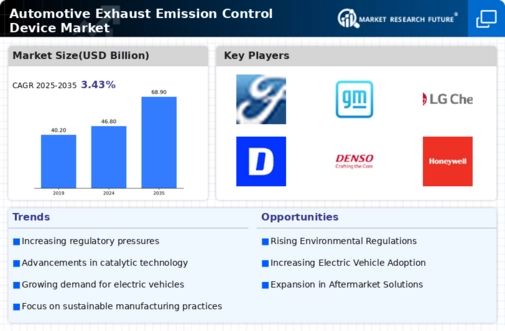
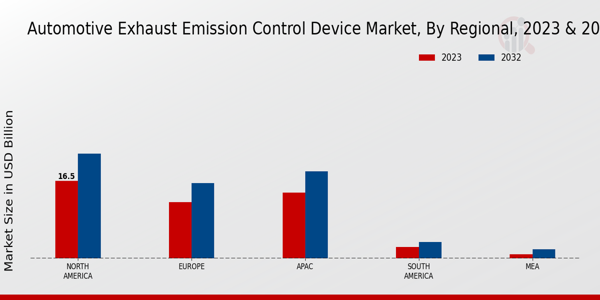
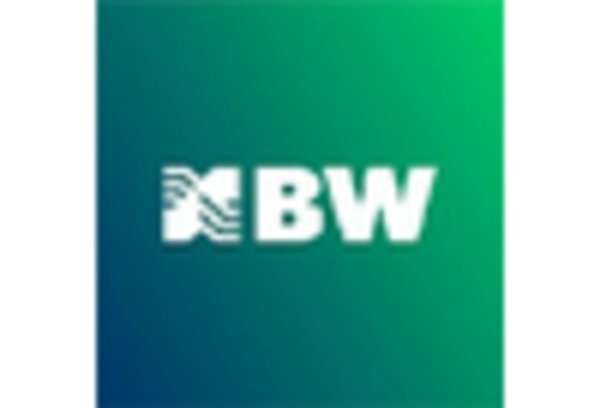

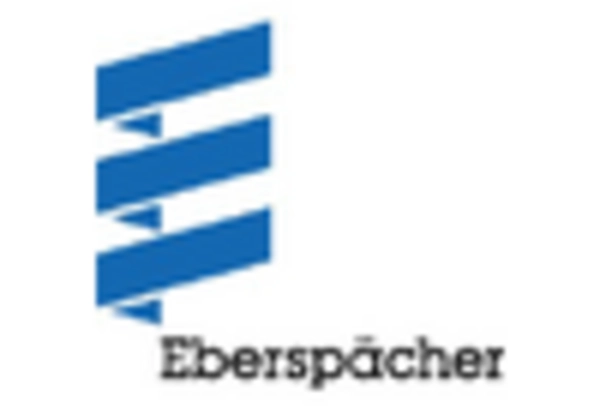
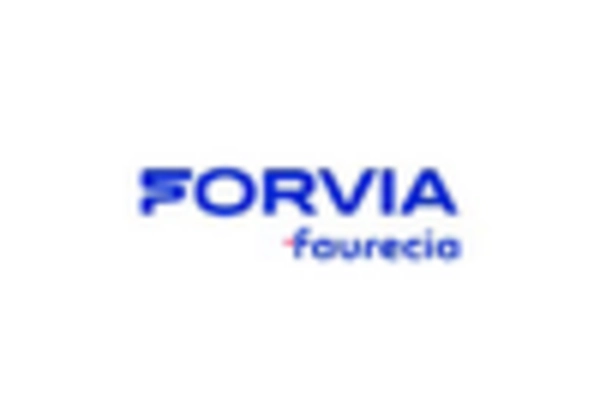
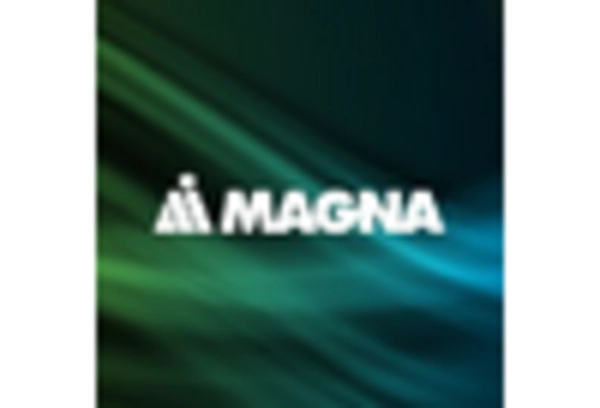
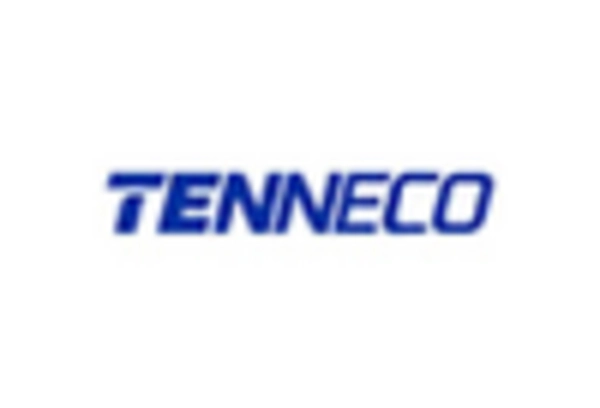

Leave a Comment